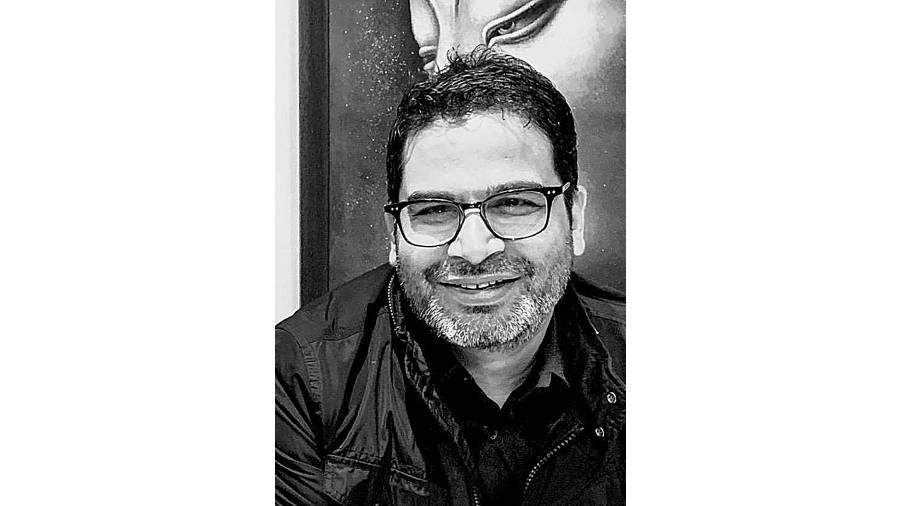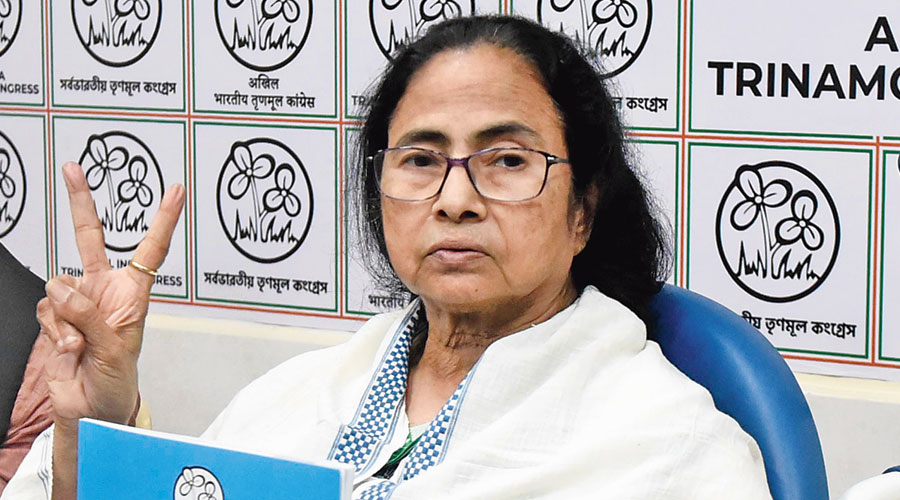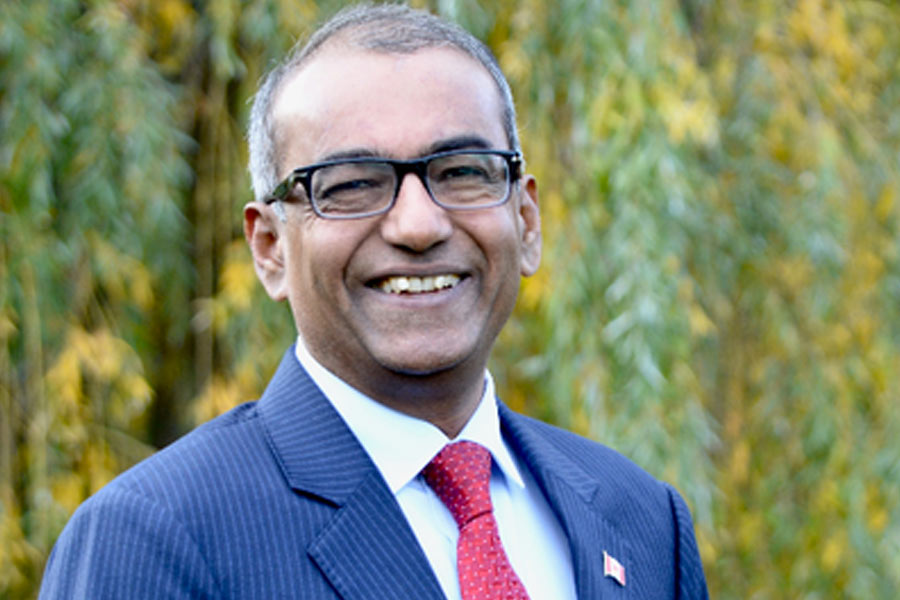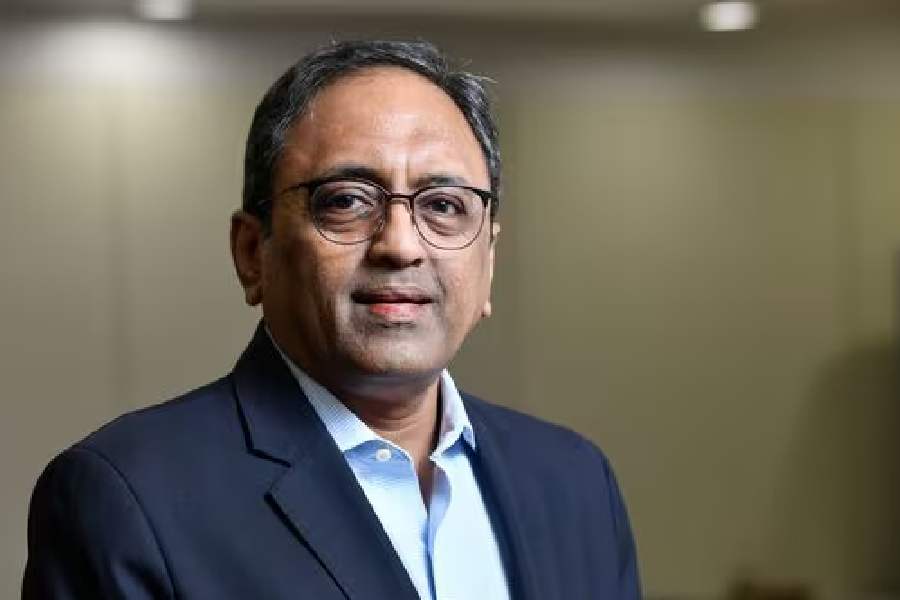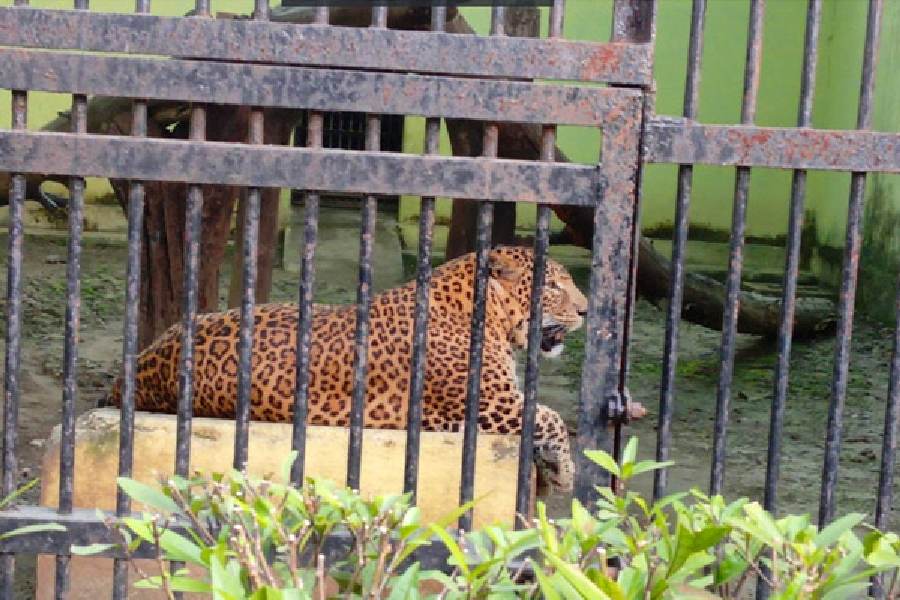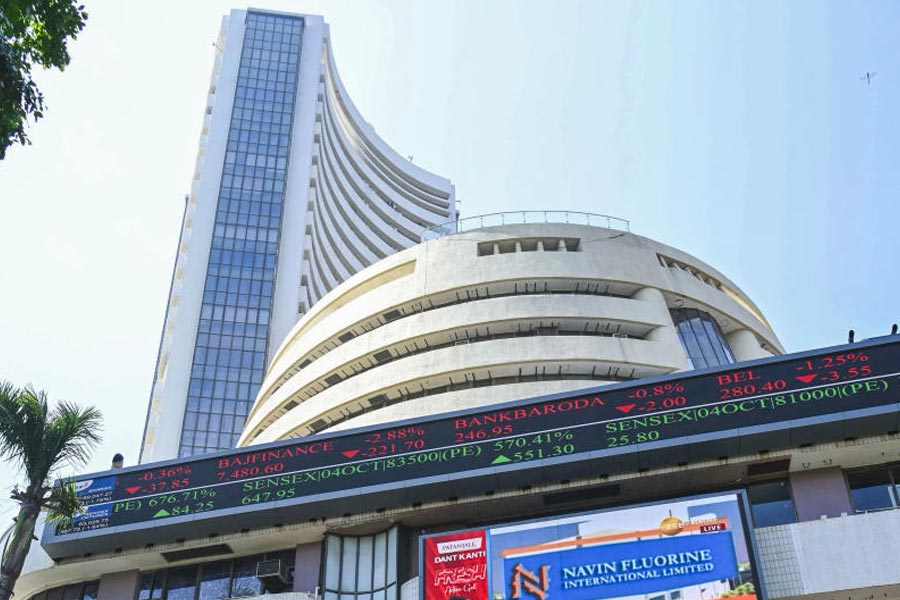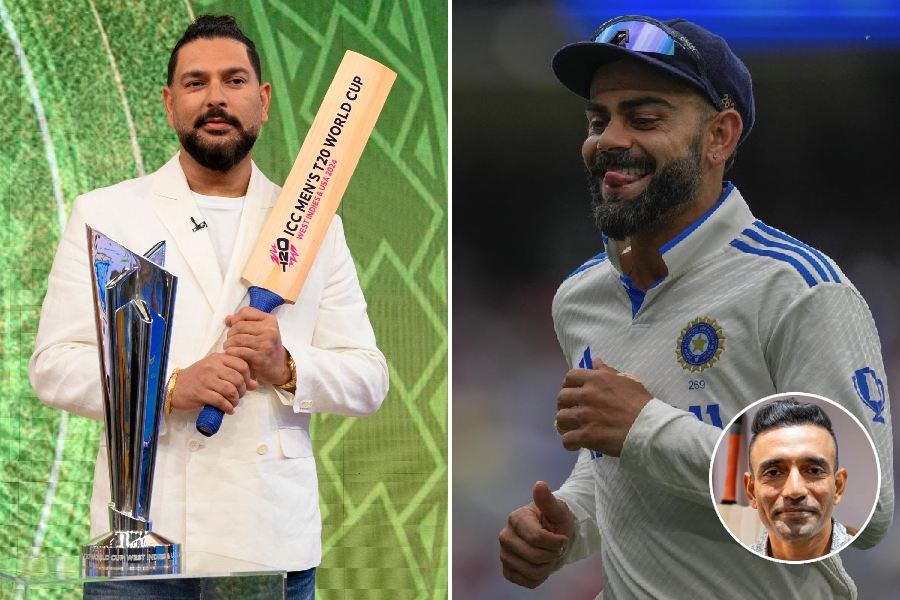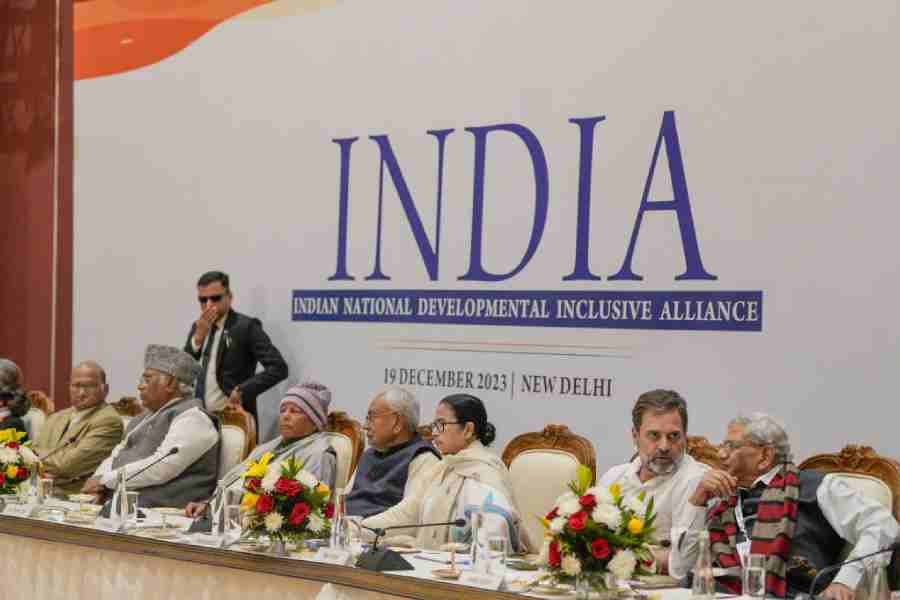It is close to two years since you took up the Mamata Banerjee project. What was the challenge when you started and what is its shape now?
I had a good idea of what I was getting into. The 2019 elections were just over and the BJP had done exceptionally well. The challenge was always to meet the tremendous might of the BJP and Sangh and their huge resources and machinery. Also, more and more, the fact that key wings of government and institutions were working in tandem with the powers. The task was, and remains, monumental because of the behemoth we are faced with. Add to that the reality that there is a degree of discontent against the Trinamul at the grassroots level; that happens when a party has been in power for 10 years. There is anti-incumbency though I would like to stress that it is mostly around local Trinamul leaders and units.
You mean anti-incumbency hasn’t affected the chief minister.
Yes, contrary to what some people like to believe, the discontent is mostly local, which is not to say it can be brushed aside. The Trinamul is a unique party and its nature has to be understood. It is not a party with a deep history or a committed cadre base. It is built on the sheer energy of a lady called Mamata Banerjee and it revolves around her. People keep joining and leaving but the core is Didi, nobody else. One of the challenges has been, with all these individuals coming in and departing, to retain internal coherence when so many others are coming and going, and it all comes down to Mamata to maintain coherence and reduce contradictions.
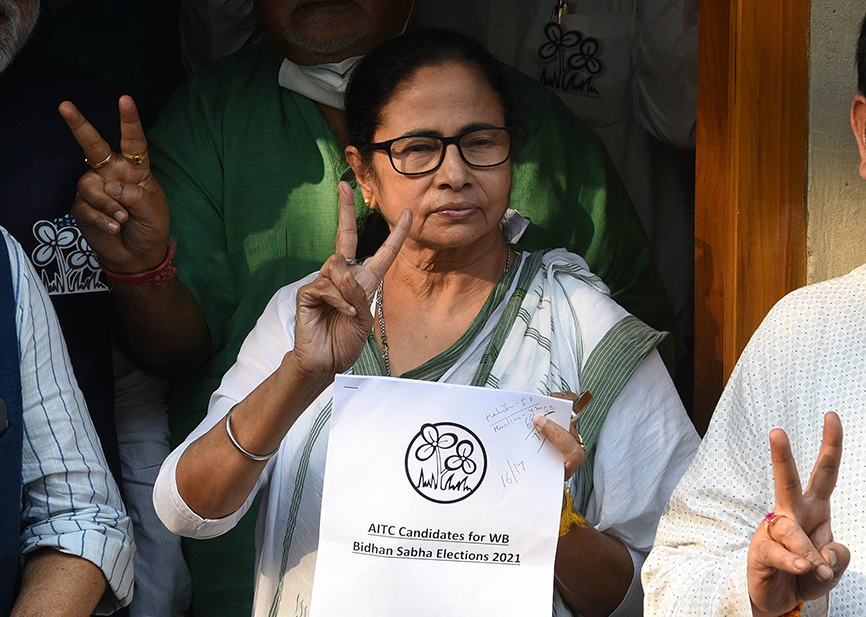
Mamata Banerjee Suman Ballav

Didi is the core of the Trinamul, she controls it, nobody else.And she remains by far the most popular leader in Bengal, nobody has such energy, grit, and presence
The BJP is playing on those contradictions and benefitting from them…
Yes, they are playing that game and that is the nature of political parties, especially around elections. But they haven’t gone very far with it, they haven’t been able to touch or smear what it means to be Mamata Banerjee. Having said that, the BJP has become a very powerful force.
How has the BJP become an entity to reckon with in Bengal, to the degree that they are serious contenders for power? Their rise has been swift and startling.
Yes, and there are reasons for it. I believe there is always space for an Opposition in a democracy, it depends on how the Opposition plays it. After the second victory of the Trinamul in 2016, the Opposition in Bengal, the Left-Congress jote, collapsed. The BJP took advantage and occupied that space. There are several factors behind how they managed it. If you look at Bengal’s political history, the locally dominant party, the Left or the Trinamul, has never really faced a determined challenge from the ruling party at the Centre. This is the first time a dominant power in Delhi is making a strong grab for power. That has traction. There are other factors. The BJP has used the Hindu-Muslim card unabashedly. Both the Left and the Trinamul have talked up minorities and got their support. Now comes the BJP and says, well, that was all appeasement politics, let’s talk the majority, let’s go majoritarian. That has some traction too. Another factor: caste is not anything to ignore across India; the BJP has been sharp to recognise that in Bengal. Both the Left and the Trinamul have broadly been upper-caste-led parties and did not pay specific, or enough, attention to other groups that make up a significant votebank. The Namasudras, the Rajbanshis, the Bagdis, the Bauris, there are many such groups. The BJP has alloyed Hinduism with subaltern castes and extracted benefit. Calcutta and its neighbourhood have a huge population of Hindi-speakers who have never felt they belonged; with the BJP and Narendra Modi, they suddenly find an entity they identify with. Add to these those who are opposed to the Trinamul and no longer believe the Left-Congress jote is a viable alternative. The BJP today is the recipient of lots of support from those who were either with the Left or the Congress. And there is also what I call the Modi voter, mostly young, urban and male in Bengal’s case. These make up a formidable electoral coalition for the BJP. Make no mistake, no matter what happens, the BJP has arrived in Bengal and will remain a force to reckon with for a long time.
You are almost suggesting you have lost the election, you make the BJP sound like a sure-fire winner…
(Laughs) Absolutely not. No. The BJP will not win, all I am arguing is that they are a very strong party even if they lose, which they will.
Is there a meaning to this election beyond just who wins or loses? I mean, the arrival of the BJP and the churn around it, the “Jai Shri Ram” cries, is there a deeper social and cultural aspect to it?
Look, there are no firewalls between what is social, cultural or political, everything gets affected and reflected in organic fashion, you cannot separate one from the other. This election will define the trajectory of democracy in this country, Bengal is the critical milestone to where we are headed as a nation. It will mean the difference between India retaining the vibrancy of a multi-party democracy or becoming a one-nation, one-party state. That is how important this election is. For the Trinamul to lose Bengal to the BJP will mean a shadow cast much wider. It will have a huge psychological impact beyond Bengal. It will put a question on the viability of putting up a challenge to the BJP, many others will come under pressure or get demoralised. To give you an example, the BJP’s huge victory in UP in 2017 did play some part in Nitish Kumar’s decision to suddenly shift to the NDA. The BJP can afford to lose this election and still remain a strong national power, the others cannot. That is the battle we are fighting.
What makes you so certain you are winning it?
The only way the BJP could have won was if the Trinamul had collapsed. That has not happened. The BJP was hoping the Trinamul would come apart, but they did not contend with Didi and what she means.
But many have left the Trinamul in recent weeks, several of them important leaders. And the blame for some of those departures lies at your door.
Yes, some have left, but these departures are not of any significance. They weren’t the best people and they have gone to the BJP. They are also people who have been in power and have carried the burden of their respective local anti-incumbency into the BJP. I leave it to your reader to judge what impact that will have, what these leaders really mean. They are discredited people. As far as blaming me is concerned, that is a narrative cooked up and fed to all these people. They leave and they say Didi is not running the party, someone else, PK is controlling everything. All of them allege it is me. When Suvendu Adhikari or Mukul Roy were running affairs, it was fine. When they have been replaced, it is a debacle. Hahaah! This narrative comes from a desire to make the Trinamul collapse, it is wishful thinking. “Didi is not in charge” is a written script, a false narrative. Didi is as much in charge as she ever was, nothing happens in the party without Didi, let that be very clear. Of course, she has associates and advisers, everybody does. Amit Shah takes decisions in the BJP, does that mean Narendra Modi has lost control, or that anything happens without his approval? People who talk like this do not understand politics.
Let’s get back to your reasons why the Trinamul cannot be defeated…
Well, part of the reason lies in just what we were talking about. The BJP’s deep desire to discredit Didi and project as if the Trinamul is collapsing. Despite their best efforts to pull people out and rattle the Trinamul, nothing has happened. Mamata Banerjee has not become a widely unpopular leader, there is no widespread anger against her or the Trinamul, there is no “Mamata Hatao” mood in the state. Yes, as I said, there is some anger at the grassroots but it is localised, it has not translated into anger against Didi, she remains above it, she remains a loved and trusted leader, not a hated and despised one. The BJP is trying, but it is failing. Mamata Banerjee is holding her ground, there is no way the BJP is winning.
This needs explanation, what enables you to make such a claim?
I will tell you why the BJP has an uphill task despite all the gains they have recently made. In a bipolar fight, which this election is, they need at least 44 per cent of the vote, and to do that the BJP has to improve substantially on its Lok Sabha performance. Usually — and Tripura and Haryana are probably small-state exceptions — the BJP underperforms in Assemblies compared to the Lok Sabha. In the UP Assembly elections, the BJP’s vote share dropped by 3 per cent compared to the 2014 polls. If nothing changes, even a 2 per cent drop in their Lok Sabha numbers in Bengal will leave them with 70-odd Assembly seats, no more. The BJP’s Assembly vote shares have also dropped by double-digits, that is not unknown. I often laugh at the BJP’s claim of grabbing more than 200 seats. Where from? Bengal is a state of huge districts, of the 23 it has, nine alone account for more than 180 seats. A party needs to completely sweep three or four large districts in order to score an upset. Does anyone see the BJP doing that? No. Are they sweeping Nadia, Hooghly, Midnapore? No. Are they sweeping a single big district? No. The BJP has maxed its Bengal performance, recent electoral history consistently shows their Assembly numbers don’t match up to the Lok Sabha performance. The Trinamul, on the other hand, is going to add to its vote share.
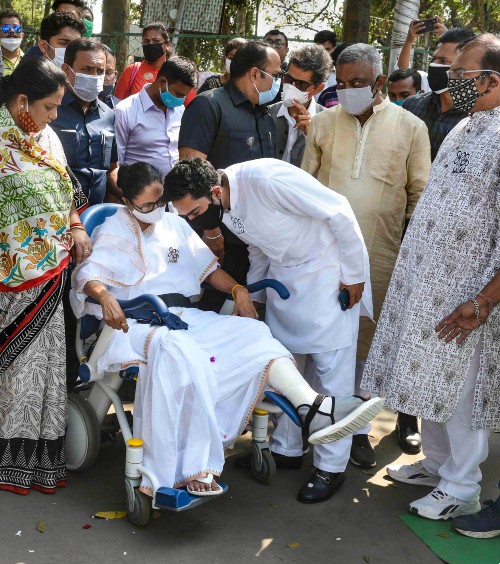
Mamata Banerjee with nephew Abhishek on Nandigram Diwas, four days after her accident PTI
Again, that’s a claim, how will that happen?
Two reasons. Didi remains by far the most popular leader in Bengal, nobody has such energy, grit, intelligence and presence. Secondly, look at how swiftly and wholesomely we have responded and rearranged ourselves. We saw and recognised the threat from the BJP, we put in place an elaborate strategy which was a mix of the administrative and the political. Our signature public outreach programmes are humming and resonating. Duare Sarkar, which clubs together 12 government programmes meant for individuals and households, is hugely successful, its impact is visible. Close to three crore people have attended camps and their problems have been heard and addressed. Then there is Swasthya Sathi, the health card. There is Paray Samadhan, which addresses neighbourhood issues like streets, drains, lighting, a whole range of local demands. For years, only three to four lakh caste certificates had been issued in Bengal, but over the last two-and-a-half months, more than 26 lakh such certificates have been given out to the eligible. Do you know how many people have dialled the Didi ke Bolo helpline? More than 30 lakh. And they have given us in excess of 75 lakh recorded phone conversations on what people’s problems are, what they want addressed. The fact that you can directly call the chief minister of the state and convey your problems has a huge impact. I am not saying all of these people will vote Trinamul, but do not discount the dividends such a comprehensive outreach can shore up. At the political level, two-thirds of the district presidents have been changed. Now this too has led to all that “exodus” talk that the BJP wants to hype, but the truth is we have a younger, more pro-active leadership across the state. It is the BJP that has come out as the desperate party, wanting to somehow make inroads into the Trinamul. Ask how many people joining the BJP in Bengal have been give Y or Y-plus security by the central government. The game is clear, and yet it is not succeeding.
What is succeeding though is polarisation, everybody is talking about it, you can feel it echoing all across Bengal. Surely that will benefit the BJP in degrees that probably cannot be measured?
Bengal is already as polarised as it could get. Is that enough to take the BJP through? No. There is no denying the BJP’s divisive thrust and polarisation, but please complete the circle. Is polarisation 100 per cent? Or even a little more than 50 per cent? Is the majority community completely blinded by just one factor? No. That doesn’t happen. In Gujarat the BJP gets 55 per cent of the vote, although the Muslim population is only 10 per cent. In UP, through the 2014, 2017 and 2019 elections, the BJP got roughly 40 per cent of the vote. So, despite optimum polarisation everything doesn’t go one way; the tea leaves need to be carefully sifted and read.
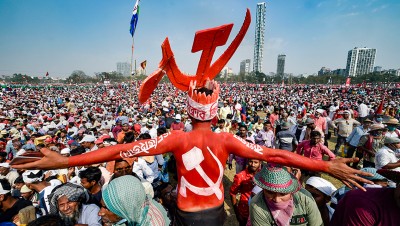
CPI(M) holds coalition rally in Brigade Grounds, Calcutta PTI
Does it not worry you that the Left-Congress jote will cut into your share and help the BJP on this score? You seem to be dismissive of them, you said this is a bipolar election.
It is a completely bipolar election. The jote is of no consequence, at best they will tear away some votes, some from us, some from the BJP too. Jote candidates are not even being noticed in most places. People are fighting a battle, for many it is a battle for survival, they are very aware what they need to do, what they don’t need to do.
What about the Modi factor, just the man and his ability to swing the voter?
At the moment he is the most popular leader countrywide, no doubt about it. He has some individual traction, but it is not enough to defeat Mamata Banerjee. Remember, this is an Assembly election.
Does it hurt the BJP that they haven’t projected a chief ministerial face?
I don’t want to comment on their strategy, that’s their lookout. They have limitations of leadership, that’s also true. But I would think it is a better thing for them that they have not projected a face, that’s the right strategy for them. I know it is not a popular thing to say, but if they had projected a face against Didi, things would have been easier for us.
Does it hurt you that Mamata Banerjee and the Trinamul are surrounded by so many allegations? That her nephew is a parallel power centre, that corrupt syndicates operate, that cut-money is an everyday thing under Trinamul rule?
Look, these are allegations and largely centred on demonising Didi, classic negative campaigning that is the house-style of the BJP. I am not sure it will pay them much dividend, eventually people get fed up of all the name-calling, the personal attacks and all the negativity. What does the BJP have to offer other than a toxic mix of religion and hyper-nationalism? We realise the effort is to create a 2002-level of polarisation with the constant bombardment of social media with canards and poisonous lies. We are having to battle that all the time. But what does the BJP have to offer beyond that?
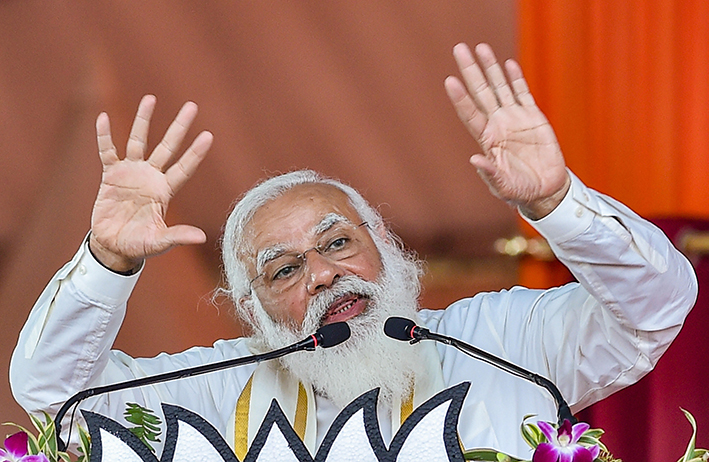
Prime Minister Narendra Modi PTI

The BJP will lose Bengal, but it has a formidable social coalition and poll machinery. It has arrived in the state and will remain a force to reckon, make no mistake
The Prime Minister has promised Aashol Paribartan...
Yes, but what is the content of it? What is the content of “Sonar Bangla”? It is laughable that the Union home minister goes to Assam and says he will make the state flood-free if the BJP comes to power. But who is in power in Assam? The BJP. People are not easily fooled. They have little other than vicious negativity and use of vast and often illicit resources at their command, and by that I mean the use of the agencies of state to harass and intimidate opponents.
On a personal note, how deeply invested are you in this battle and how tough is the place you’re in?
I don’t do things half-hearted, I always knew the challenge I was entering. Elections are good or bad for people on the outside, pundits and commentators pronounce on them. For those of us on the inside, it is just about doing the job. There is a job we are doing in Tamil Nadu also, but nobody is talking about it because it is probably not such a high-voltage thing. But the job is the same. Bengal is tough, but I still believe my toughest campaign was winning Punjab for Captain Amarinder Singh. Each battle is different.
And this is a khela hobey battle; what does that connote to you? Khela hobey?
There are two slogans we are consciously using. One is the projection of Mamata Banerjee as Banglar meye, Bengal’s daughter. This is very different from Didi, which gives you the sense of a protector and provider, an elder with an umbrella for you. Banglar meye is a distinctly different positioning. It conveys the urge to stand by someone under attack, to own up your own and abide by them, it conveys an embracing of someone your own, a native. Khela hobey is a war cry. The BJP tends to scare opponents, it enters a battle pretending it has already won, declares victory before actually winning. Khela hobey says, no, hold your horses, we are not scared, we are here to face you and defeat you, we are girded for battle, game on!

